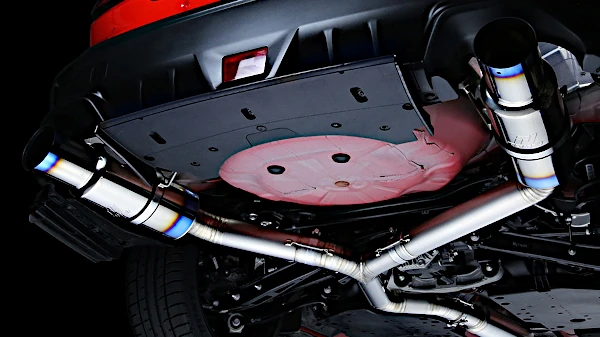Guide to Choosing the Best Aftermarket Exhaust
Introduction
What is an Aftermarket Exhaust and Why Consider Upgrading?
An aftermarket exhaust system is a replacement for the stock exhaust system installed by the manufacturer. Car enthusiasts often upgrade to aftermarket exhausts for better performance, enhanced sound, and aesthetic improvements.
Key Benefits
- Improved Performance: A high-quality exhaust system can increase horsepower and torque by improving airflow.
- Better Sound: Many aftermarket exhausts offer a deeper, more aggressive engine note.
- Weight Reduction: Lighter materials like titanium or stainless steel reduce overall vehicle weight.
What to Expect from This Guide
This guide will walk you through the different types of aftermarket exhaust systems, their benefits, installation tips, and how to choose the best one for your needs. Whether you seek performance gains, an enhanced engine sound, or a stylish look, this guide has you covered.
What is an Aftermarket Exhaust?
How it Differs from a Factory Exhaust System
A factory exhaust system is designed primarily for cost efficiency and noise reduction, often limiting performance potential. In contrast, an aftermarket exhaust system is engineered to improve airflow, reduce restrictions, and enhance the engine's efficiency.
Performance Benefits
- Power: A less restrictive exhaust system allows the engine to expel gases more efficiently, potentially increasing power, especially at higher RPMs.
- Torque: Improved exhaust flow can enhance torque, but the effect depends on the system’s design. An improperly sized exhaust may reduce low-end torque.
- Fuel Efficiency: A well-designed aftermarket exhaust system can improve combustion efficiency, which, under certain conditions, may lead to slight fuel savings.
How Exhaust Flow Affects Engine Performance
The speed and efficiency at which exhaust gases exit the engine directly impact performance. A restrictive exhaust can cause backpressure, reducing power output. An aftermarket system with a wider diameter and smoother bends minimizes backpressure, allowing the engine to breathe more efficiently and perform at its best.
Types of Aftermarket Exhaust Systems
Axle-Back Exhaust
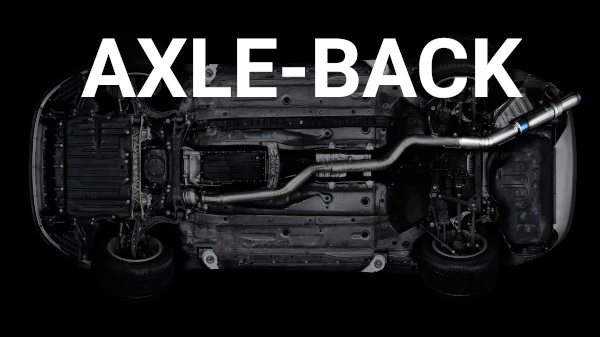
An axle-back exhaust replaces the exhaust system from the rear axle to the exhaust tip. It primarily changes the car’s sound and appearance rather than significantly improving performance.
- Pros: Affordable, easy to install, enhances sound.
- Cons: Minimal performance gains, limited impact on exhaust flow.
- Who should consider this option? Ideal for those looking for an affordable way to improve their vehicle’s sound and aesthetics without major modifications.
Cat-Back Exhaust
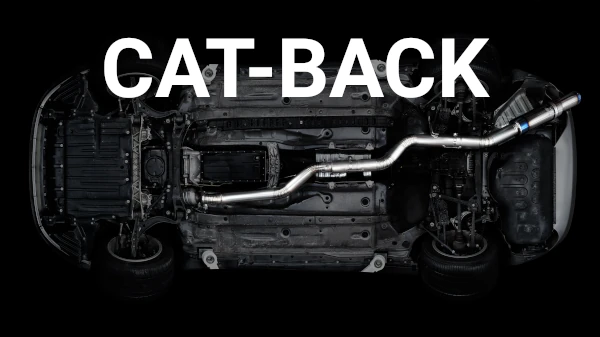
A cat-back exhaust system replaces components from the cataytic converter to the exhaust tip, improving airflow and performance.
- Performance Gains: Increases horsepower and torque by reducing restrictions.
- Sound Modifications: Offers a more aggressive exhaust note.
- Weight Savings: Typically lighter than factory exhaust systems.
- Material Choices: Common materials include stainless steel, titanium, and aluminized steel for durability.
Turbo-Back Exhaust
A turbo-back exhaust system replaces all components from the turbocharger to the exhaust tip (catalytic converter, particulate filter, resonator, muffler), maximizing power gains.
- Power Increase: Allows turbocharged engines to expel exhaust gases more efficiently.
- Tuning Requirements: Often requires ECU tuning to optimize performance.
- Installation Considerations: More complex installation compared to other exhaust systems.
- Ideal Applications: Best suited for high-performance and modified turbocharged vehicles.
Full Exhaust System
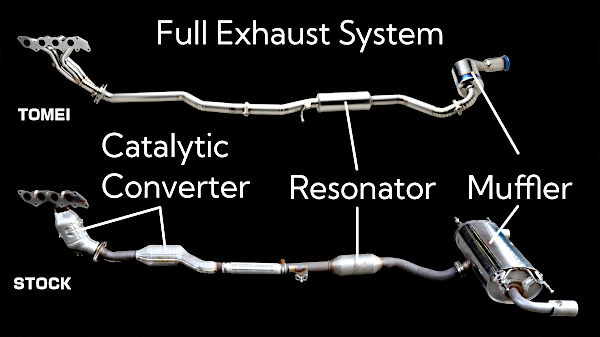
A full exhaust system replaces the entire factory exhaust setup, providing maximum performance gains(exhaust manifolds and headers).
- Performance Benefits: Enhances horsepower, torque, and overall engine efficiency.
- Best Materials: Commonly built from stainless steel or titanium for longevity.
- Transformation: Offers the most significant impact on vehicle performance and sound.
- Cost vs. Benefit: Expensive but provides the highest level of performance improvement.
How to Choose the Best Aftermarket Exhaust for Your Car
Performance vs. Budget
Choosing the right exhaust system depends on balancing performance gains with cost. High-end systems offer better materials and engineering, but the price can be significant.
- Real-World Horsepower and Torque Gains: While advertised gains can be impressive, actual performance improvements depend on the vehicle and exhaust design.
- When a High-End System is Worth It: If you are looking for maximum power, reduced weight, and long-term durability, investing in a premium exhaust can be beneficial.
Material Choices and Longevity
The material of an exhaust system affects its durability, weight, and resistance to corrosion.
- Stainless Steel: Resistant to rust and corrosion, making it ideal for long-term use.
- Titanium: Lightweight and highly durable, but more expensive.
- Aluminized Steel: More affordable but prone to corrosion over time, especially in humid or salty environments.
- Climate and Driving Style: Frequent exposure to moisture or aggressive driving can accelerate wear and tear on lower-quality materials.
Sound and Legal Considerations
Exhaust systems significantly impact sound levels, and it's important to stay within legal limits.
- Exhaust Sound Levels: A more aggressive exhaust note can enhance the driving experience but may be too loud for daily use.
- Noise Regulations: Some areas have strict noise restrictions, so ensure your exhaust system complies with local laws.
Weight Reduction Benefits
A lighter exhaust system can improve handling and vehicle performance.
- Handling Improvements: Reducing weight, especially at the rear of the car, enhances balance and agility.
- Factory vs. Aftermarket Weight Differences: Aftermarket exhausts, particularly those made from titanium, are significantly lighter than factory exhausts.
Installation and Maintenance Tips
DIY vs. Professional Installation
Installing an aftermarket exhaust can be done at home with the right tools, but professional installation may be a better choice for complex systems.
- Tools and Skills Needed for Self-Installation: Basic hand tools, a car jack, jack stands, and knowledge of vehicle exhaust systems are essential.
- When Professional Help is a Better Option: If the installation requires welding, modifications, or precise fitment, seeking professional assistance can ensure proper setup and avoid damage.
Maintaining Your Aftermarket Exhaust
Proper maintenance is crucial for longevity and optimal performance.
- Regularly inspect the exhaust system for rust and wear on components such as hangers, isolators, flex pipes, and gaskets. Check for leaks and replace worn gaskets or clamps as needed to ensure optimal performance and durability.
Common Myths About Aftermarket Exhaust Systems
Does a Louder Exhaust Always Mean More Power?
Many believe that a louder exhaust automatically equates to increased performance. While an aftermarket exhaust can enhance sound, power gains depend on improved exhaust flow and reduced restrictions, not just noise.
Distinguishing Between Backpressure and the Scavenging Effect
Backpressure in the exhaust system is often confused with the scavenging effect. While backpressure can be detrimental to engine performance, the scavenging effect is beneficial as it involves effectively removing exhaust gases and drawing in fresh air into the cylinders.
Do You Really Need an ECU Tune After an Upgrade?
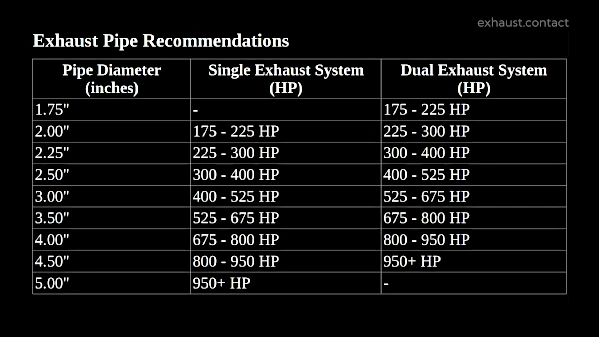
While some aftermarket exhaust systems work without an ECU tune, maximizing performance gains often requires recalibrating the engine’s parameters to optimize fuel-air mixture and efficiency.
Best Aftermarket Exhausts for Different Vehicles
Recommended Systems for Sports Cars, Trucks, and Daily Drivers
- Sports Cars: High-performance cat-back or turbo-back systems maximize power and sound enhancements.
- Trucks: Performance exhausts improve towing capacity, torque, and fuel efficiency.
- Daily Drivers: Balanced systems provide subtle performance gains without excessive noise.
Price vs. Performance Comparison
Premium exhaust systems offer superior materials and design, but budget-friendly options can still provide noticeable improvements. It’s essential to weigh cost against expected benefits.
Choosing the Right Setup for Your Driving Needs
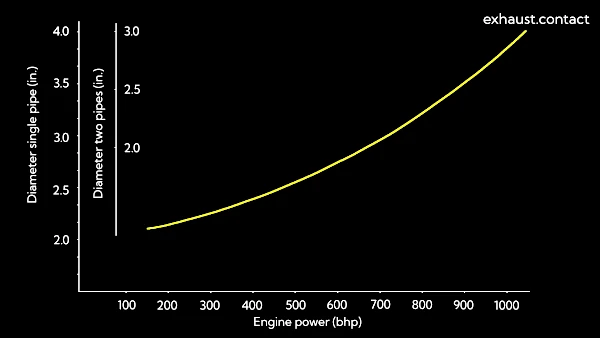
Your choice should align with your goals—whether maximizing power, improving sound, or ensuring long-term durability.
Conclusion
Summary of Key Aftermarket Exhaust Benefits
Upgrading your exhaust can enhance performance, improve sound, and reduce weight, making it a worthwhile modification.
Final Recommendations Based on Performance Goals
Consider your budget, vehicle type, and intended use when selecting an exhaust system to ensure the best outcome.
Tips for Making the Best Choice
- Research different systems and materials before purchasing.
- Ensure compatibility with your vehicle and local regulations.
- Balance cost with expected performance improvements.
